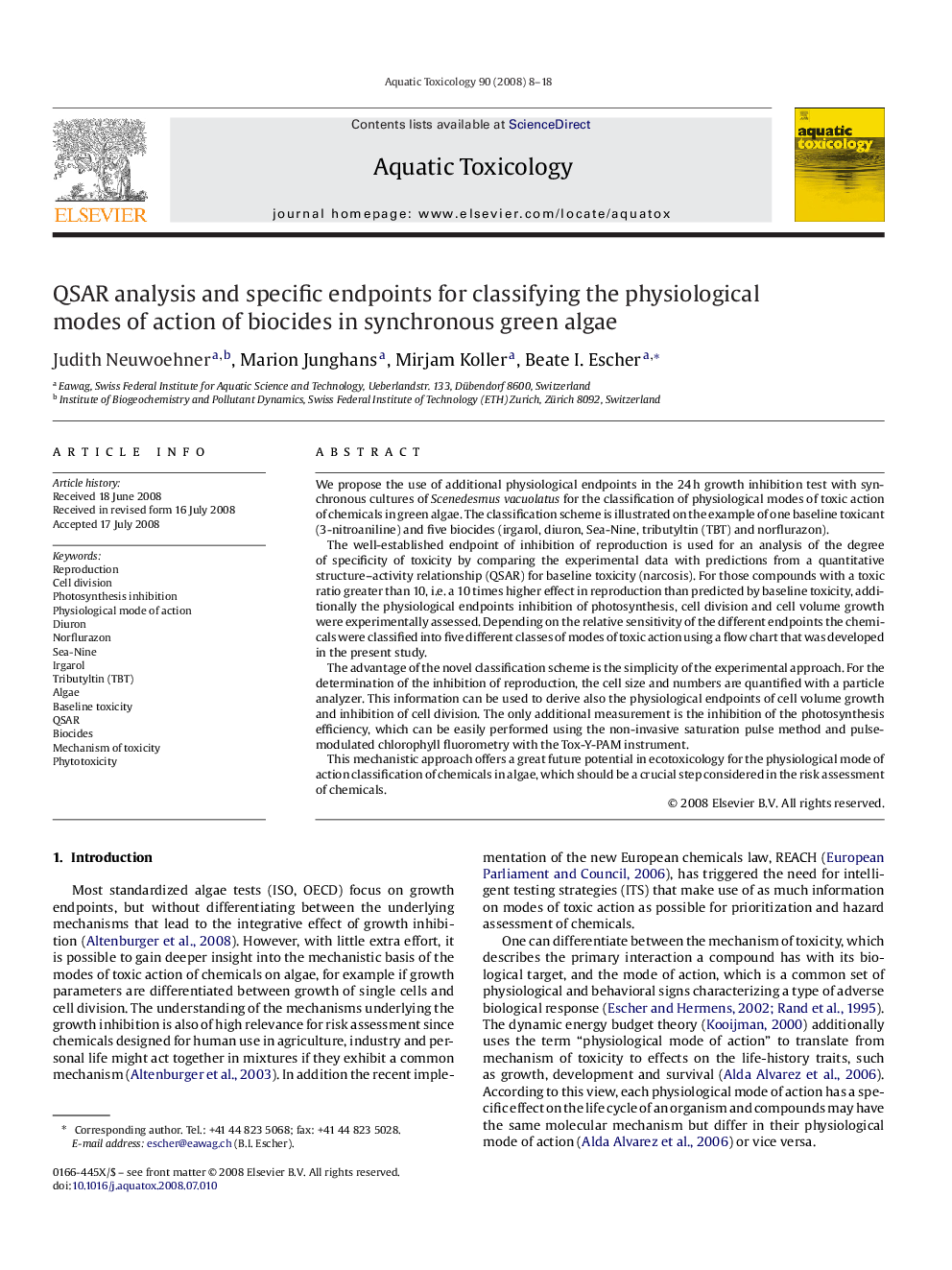| کد مقاله | کد نشریه | سال انتشار | مقاله انگلیسی | نسخه تمام متن |
|---|---|---|---|---|
| 4530727 | 1324725 | 2008 | 11 صفحه PDF | دانلود رایگان |

We propose the use of additional physiological endpoints in the 24 h growth inhibition test with synchronous cultures of Scenedesmus vacuolatus for the classification of physiological modes of toxic action of chemicals in green algae. The classification scheme is illustrated on the example of one baseline toxicant (3-nitroaniline) and five biocides (irgarol, diuron, Sea-Nine, tributyltin (TBT) and norflurazon).The well-established endpoint of inhibition of reproduction is used for an analysis of the degree of specificity of toxicity by comparing the experimental data with predictions from a quantitative structure–activity relationship (QSAR) for baseline toxicity (narcosis). For those compounds with a toxic ratio greater than 10, i.e. a 10 times higher effect in reproduction than predicted by baseline toxicity, additionally the physiological endpoints inhibition of photosynthesis, cell division and cell volume growth were experimentally assessed. Depending on the relative sensitivity of the different endpoints the chemicals were classified into five different classes of modes of toxic action using a flow chart that was developed in the present study.The advantage of the novel classification scheme is the simplicity of the experimental approach. For the determination of the inhibition of reproduction, the cell size and numbers are quantified with a particle analyzer. This information can be used to derive also the physiological endpoints of cell volume growth and inhibition of cell division. The only additional measurement is the inhibition of the photosynthesis efficiency, which can be easily performed using the non-invasive saturation pulse method and pulse-modulated chlorophyll fluorometry with the Tox-Y-PAM instrument.This mechanistic approach offers a great future potential in ecotoxicology for the physiological mode of action classification of chemicals in algae, which should be a crucial step considered in the risk assessment of chemicals.
Journal: Aquatic Toxicology - Volume 90, Issue 1, 20 October 2008, Pages 8–18